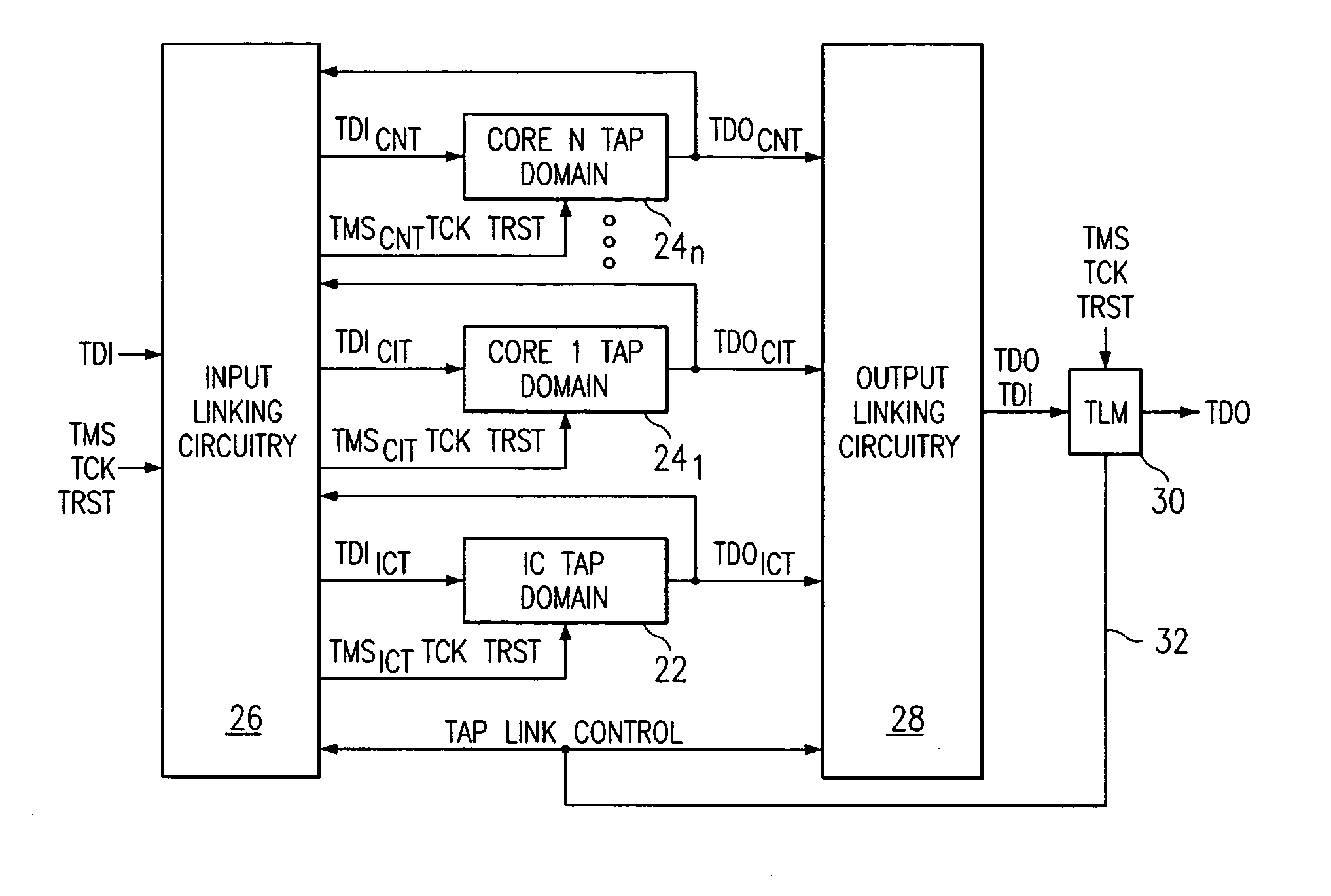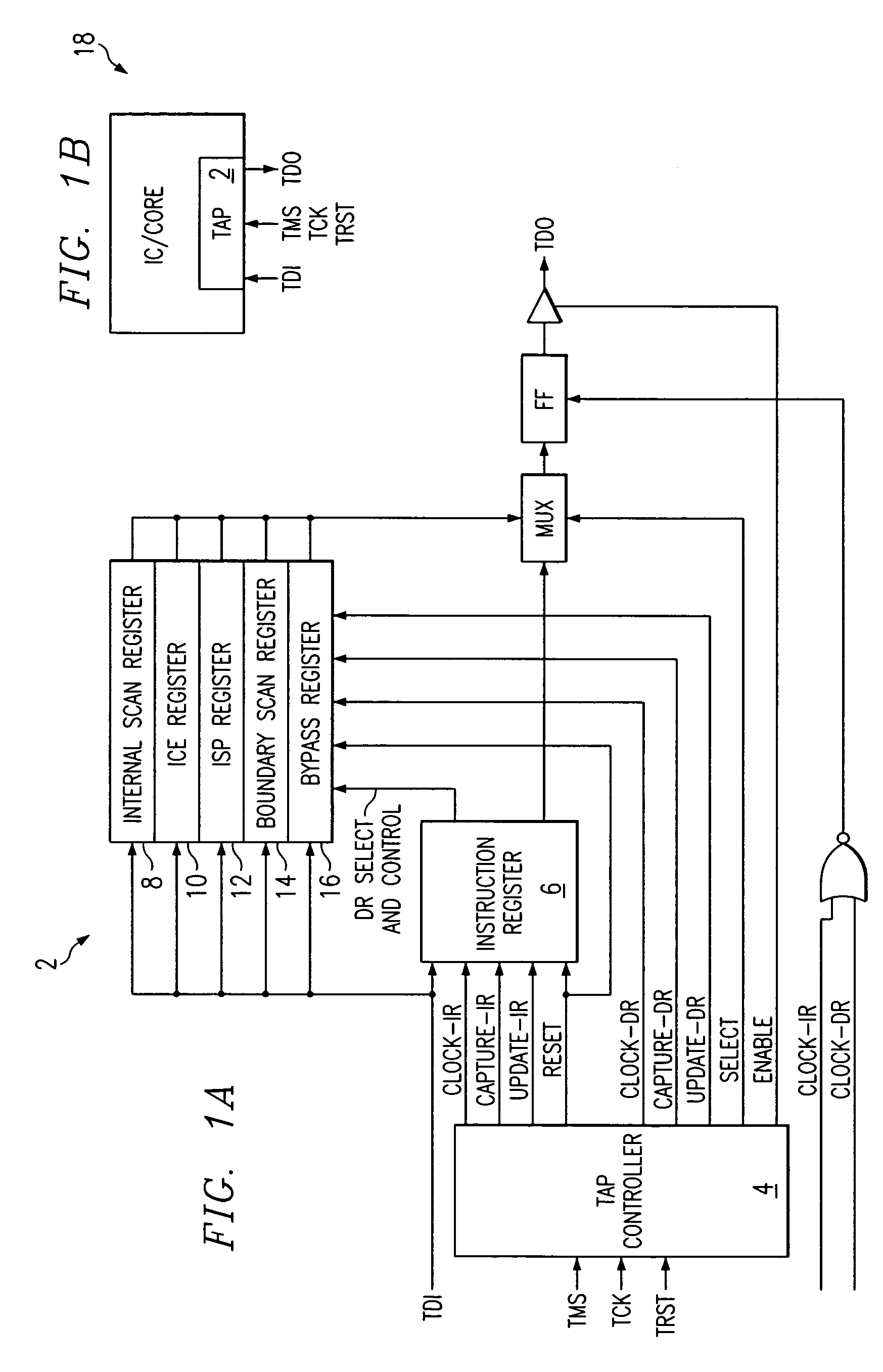IC with linking module in series with TAP circuitry
a technology of tap circuitry and linking modules, applied in the field of integrated circuits, can solve problems such as unnecessarily complex access to testing, in-circuit emulation, and/or in-circuit programming functions associated with one of the individual tap domains
- Summary
- Abstract
- Description
- Claims
- Application Information
AI Technical Summary
Benefits of technology
Problems solved by technology
Method used
Image
Examples
Embodiment Construction
[0023]FIG. 4 illustrates the preferred structure for connecting multiple TAP domains within an IC according to the present invention. The structure of the present invention includes input linking circuitry 26 and output linking circuitry 28 for connecting any one or more TAP domains to the ICs TDI, TDO, TMS, TCK and TRST pins, and a TAP Linking Module (TLM) 30 circuit for providing the control to operate the input and output linking circuitry. The concept of input and output linking circuitry and use of a TLM circuit to control the input and output linking circuitry is disclosed in application Ser. No. 08 / 918,872, filed Aug. 26, 1999, now U.S. Pat. No. 6,073,254.
[0024]The input linking circuitry 26 receives as input; (1) the TDI, TMS, TCK, and TRST IC pins signals, (2) the TDO outputs from the IC TAP (ICT) domain 22 (TDOICT), the Core 1 TAP (CIT) domain 241 (TDOCIT), and the Core N TAP (CNT) domain 24n (TDOCNT), and (3) TAP link control input from the TLM 30. The TCK and TRST inputs...
PUM
 Login to View More
Login to View More Abstract
Description
Claims
Application Information
 Login to View More
Login to View More - R&D
- Intellectual Property
- Life Sciences
- Materials
- Tech Scout
- Unparalleled Data Quality
- Higher Quality Content
- 60% Fewer Hallucinations
Browse by: Latest US Patents, China's latest patents, Technical Efficacy Thesaurus, Application Domain, Technology Topic, Popular Technical Reports.
© 2025 PatSnap. All rights reserved.Legal|Privacy policy|Modern Slavery Act Transparency Statement|Sitemap|About US| Contact US: help@patsnap.com



